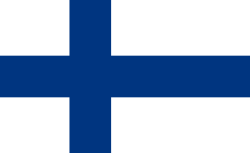The Story of Kevra Oy
In the 1960s and 1970s, Ilkka Airasmaa worked as a sales engineer for textile yarns from the British company Courtalds Ltd in Finland, and from the early 1970s, he served as a sales development engineer for the company’s Grafil carbon fibers, with responsibility for all the Nordic countries. In the 1960s, Courtalds was the world’s largest manufacturer of acrylic fibers and began developing a carbon fiber production process at the end of the decade by using acrylics as raw material, with the goal of bringing carbon fiber production to a commercial level. The initial production of just a few kilograms grew to a scale that allowed for commercial marketing to begin. Beyond aerospace and military technology, civilian applications had to be found for this new fiber developed for reinforcing plastics. A great deal of time and energy was invested in idea generation. Many of these ideas were not realized until the 1990s. In civilian applications, Finland was the leading country in Europe and a major player globally. There was no prejudice against this new reinforcing material, and from the early 1970s onward, carbon fiber began to be used extensively in PIK gliders, KOHO hockey sticks, Exel ski poles, and various technical pultrusion products. Carbon fiber also found its way into sailing and motorboats designed for racing. Mölnlycke in Mikkeli, which later became Ahlstrom Kuitulasi, began weaving carbon fiber tapes. Ypä-Tuote was also among the first major customers. Among Swedish clients were Saab Aerospace, Abu, Stiga, Bofors, and Trelleborg Plast.
Courtaulds had gradually expanded its marketing through local agents and distributors, and before moving to Koho, Ilkka concluded that this approach would also be the most suitable for the Nordic markets — and so it was implemented.
Through carbon fibers, Ilkka became familiar with the PIK-20 sailplane project and got to know the people working on it. At the beginning of serial production, the aircraft could be ordered with carbon fiber wing spars as a special option, but the situation quickly reversed — carbon fiber-reinforced spars became standard on all aircraft. The PIK-20 sailplane is the world’s first serially produced aircraft to use
carbon fiber in load-bearing structures. The other founding members of Kevra Oy were found at the Lightweight Structures Laboratory of Helsinki University of Technology (TKK) in Otaniemi: Juhani (Jussi) Malinen, Pekka Tammi, and Hellevi Satuli. Jussi Malinen had worked for years in sailplane manufacturing and knew fiber-reinforced plastic technology hands-on. He held a private pilot's license and carried out the PIK-20 test flights, and later also the test flights for a domestically manufactured, single-engine, two-seat amphibious aircraft. Pekka Tammi had designed the PIK-20 sailplane and completed his thesis on it. His spouse, Hellevi Satuli, also worked at the TKK Lightweight Structures Laboratory. She held a glider pilot's license. These four individuals founded Kevra Oy on June 1, 1977. The share capital was 2,000 Finnish marks, with four shares issued — one for each founder. The company officially began operations on July 1, 1977, when it was registered in the trade register. Hellevi Satuli started as the company’s managing director.
Ilkka worked at Amer Group’s KOHO hockey stick factory as Sales Manager and later as Acting Managing Director. From that position, Courtaulds' Grafil division persuaded him to return to the carbon fiber sector and to join Kevra Oy. Courtaulds promised to support Kevra’s operations with a significant contribution — and they kept that promise.
Once operations began, the product range quickly expanded to include other raw materials for the fiber-reinforced plastics industry. The first suppliers included Fillite Ltd (fillers), and the European units of the American company Hexcel (glass and carbon fiber reinforcements). After the acquisition of Ciba-Geigy Composites, these units became Hexcel Composites Ltd, later joined by Hexcel Reinforcements Ltd. Also among the early partners was SP Systems Ltd (epoxy resins), now known as Gurit. As the textile industry declined, Courtaulds Ltd sold the Grafil business—first to Hysol, and later it was acquired by Mitsubishi, which expanded the product range with Pyrofil carbon fibers. Today, the carbon fiber operations are part of Mitsubishi Chemical Carbon Fiber and Composites. Close cooperation with Hexcel, Mitsubishi, and Gurit has continued uninterrupted since Kevra’s first financial year. As domestic sales grew, there was no longer time to focus on the other Nordic countries, and local representatives had to be found for Grafil carbon fibers.
The positive development of operations in the early years was significantly influenced by projects commissioned by the Finnish Air Force for their aircraft fleet. Jussi Malinen was responsible for the manufacturing of fiber-reinforced plastic composites. In Kevra’s early days, the company also had its own industrial production. Throughout its existence, Kevra has been closely intertwined with the development of the carbon fiber materials and composite structures markets. In addition, the expanded product range came to include release agents for the polyurethane, rubber, and aluminum industries, as well as RTV silicones for the crafts, electrical, and electronics industries.
The name Kevra Oy comes from the word "Kevytrakenteet" (Lightweight Structures). In 2017, Kevra Oy celebrated its 40th anniversary. That same year, Kevra's logo was updated for the first time in decades. The new logo is intended to communicate to customers and partners Kevra’s commitment to creating lightweight and strong structures. The design of the logo evolved by combining the forms of carbon fiber fabric and down feathers.
Today, Kevra Oy operates as a consulting importer of raw materials for fiber-reinforced plastics and specialty chemicals, following the same principles as in 1977: assisting customers in adopting new raw materials and manufacturing technologies. Kevra's clientele includes Finland’s largest companies in the composites industry, as well as a wide range of small and medium-sized enterprises. However, Kevra also serves smaller composite projects through its brick-and-mortar store located in Ylästö, Vantaa, as well as through its online shop www.kevytrakentajanverkkokauppa.fi
When you need something lightweight and strong – get in touch!

